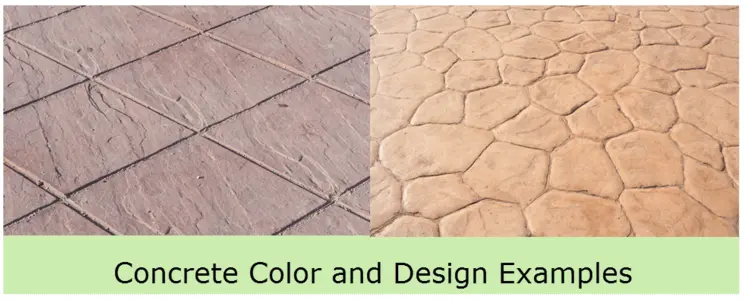Hardscape Landscape Options
Making the outdoors an extension of your home can bring you years of enjoyment and add to the value of your home. Hardscape can greatly add to the style and beauty and even utility of your outdoor space, and the hardscape options available today are abundant and priced to fit every budget.
ALL THE OPTIONS
Hardscape Options Overview
Concrete
Concrete is one of the most widely used building materials worldwide because of its strength and durability. Concrete offers the added benefit of being one of the most versatile materials available for enhancing outdoor spaces because it offers unlimited design flexibility in terms of shape, color and texture. Concrete is also very cost-effective when compared with other paving materials.
Concrete Pros and Cons:
- Lasting Durability – Concrete endures extreme weather conditions and heavy foot traffic. It also resists the abrasion of heavy outdoor patio furniture.
- Versatility – Concrete can be used for many applications both in and around the home.
- It’s often thought of as primarily a paving material for patios, sidewalks and driveways. However you can also use concrete to make counter tops, sinks, fireplaces, outdoor waterscapes and even furniture.
- Design flexibility – Concrete can be cast in nearly any form or shape and has the ability to be stamped, stained, dyed or colored.

Pavers
Contemporary landscapes have become a showcase of manufactured paving stones valued for their low cost and long term durability. They originated in Europe after the war when an affordable unit paver was needed to rebuild streets that would hold up far longer than poured concrete or asphalt.
Precast paving stones caught on in landscapes early on due to affordability and versatility. The majority of these fall into one or more categories:
- Interlocking pavers – a wide range of shapes and colors coordinated to produce a paving pattern once installed.
- Precast unit pavers – crisp, uniformly shaped units such as squares or brick-like rectangles in various sizes.
- Tumbled precast unit pavers – tumbled at the factory to produce a more natural looking surface. Tumbled pavers also offer a softer edge that may prove safer in high activity areas such as swimming pool decks and adjacent to sports courts.
- Open Cell pavers – designed to allow water to drain through openings in the paver itself, or through those set into the edges that result in increased flow through the joints.
- Turf pavers – developed to allow emergency equipment to drive over lawn, typically to provide fire lanes to multifamily housing without paving the entire surface and are often cast in a lattice texture that provides openings large enough for turf to grow throughout.
- Stone pavers – remnants of pre-war pavements created out of rough hewn stone squares that once replaced cobblestones.
Decomposed Granite
If you’re looking to simplify garden maintenance and cut back on water usage, decomposed granite is a good bet to use in your garden as part of the hardscape. Why? Decomposed granite is the ideal hardscape material in that it is natural, permeable, aesthetically versatile, and wonderfully inexpensive compared to other options.
Decomposed granite, or DG, is similar to gravel, but finer and more stable. It is a granitic rock that was formed through natural weathering, erosion of solid granite, and tough, hard igneous rocks. This landscaping material is usually composed of ⅜ inch or smaller particles. Colors may vary from gray, gold, pink brown, and even purple.
Decomposed granite comes in three forms: natural, stabilized, and resin-coated. Below are practical uses of each form.
- Natural DG can be used as a mulch material that can be spread around trees and flower beds. Not only will it continue to weather after it is put in place, but it will also provide nutrients to soil, it lasts longer than other mulch material and will keep pests away from plants.
- DG mied with stabilizers can be used for your path or patio. Stabilized DG is often added as a top layer, and has great longevity.
- Resin-coated DG, sometimes called poly pavement can function as surface for driveways. It has a more natural look as compared to asphalt, and is permeable.

